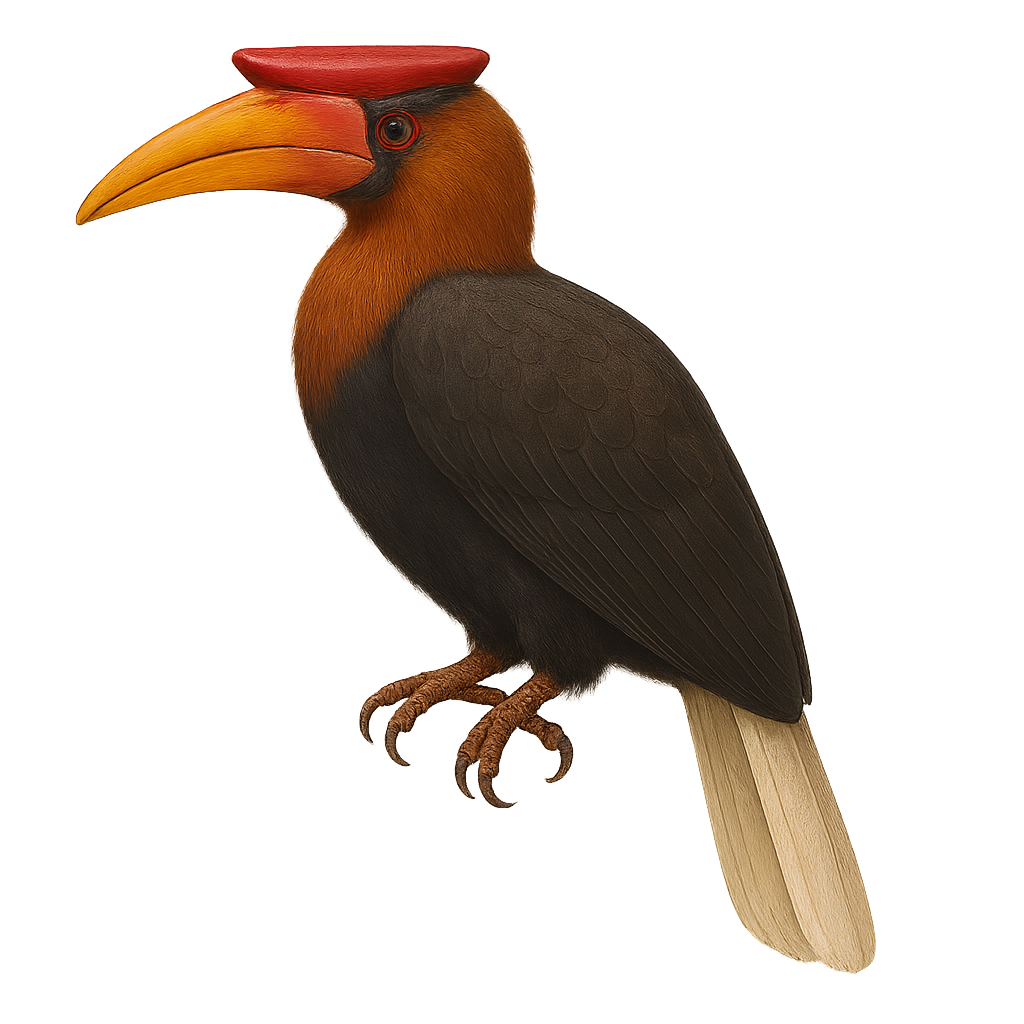Your wildlife photography guide.
Explore the rufous hornbill in detail, study its behavior, prepare your shots.
Where to observe and photograph the rufous hornbill in the wild
Learn where and when to spot the rufous hornbill in the wild, how to identify the species based on distinctive features, and what natural environments it inhabits. The WildlifePhotographer app offers tailored photography tips that reflect the rufous hornbill’s behavior, helping you capture better wildlife images. Explore the full species profile for key information including description, habitat, active periods, and approach techniques.
Rufous Hornbill
Scientific name: Buceros hydrocorax

IUCN Status: Vulnerable
Family: BUCEROTIDAE
Group: Birds
Sensitivity to human approach: Suspicious
Minimum approach distance: 10 m
Courtship display: February to March
Incubation: 28-31 jours
Hatchings: March to April
Habitat:
Tropical rainforests, lowland wooded areas
Activity period :
Primarily active during the day, with peak activity in the morning and late afternoon.
Identification and description:
The Rufous Hornbill, or Buceros hydrocorax, is a large hornbill endemic to the Philippines, easily recognized by its reddish-brown plumage, massive bright red bill, and broad, flattened casque shaped like a blade. It inhabits primary and secondary forests from lowlands to mountain slopes. Its diet consists mainly of fruits, especially figs, along with small animals. Its strong, heavy wingbeats produce a loud sound in flight. Often seen in pairs or family groups, the Rufous Hornbill is classified as vulnerable due to rapid deforestation within its limited range.
Recommended lens:
400mm – adjust based on distance, desired framing (portrait or habitat), and approach conditions.
Photography tips:
To photograph the Rufous Hornbill, it is advisable to use a telephoto lens of at least 400mm to capture detailed images from a distance without disturbing the bird. Look for areas where hornbills feed or rest, often high in the trees. Be patient and discreet, as these birds can be suspicious. Morning is often the best time to observe them, as they are more active. Use a tripod to stabilize your camera and achieve sharp images.
The WildlifePhotographer App is coming soon!
Be the first to explore the best nature spots, track rutting seasons, log your observations, and observe more wildlife.
Already 1 430 wildlife lovers subscribed worldwide

